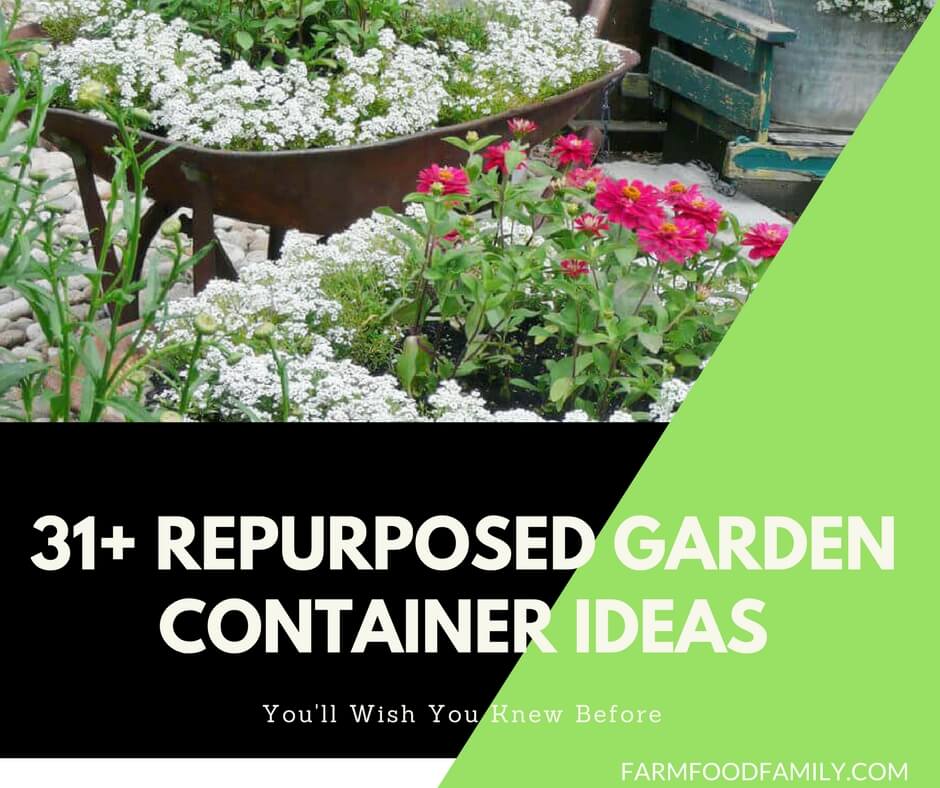Have you ever looked at an old item and seen a garden waiting to bloom?
The significance of repurposing in reducing waste is substantial.
When you choose to repurpose, you are minimizing your carbon footprint.

By opting for repurposed containers, you support a more sustainable and environmentally friendly approach to gardening.
How Repurposing Contributes to Unique Garden Aesthetics
The beauty ofrepurposed garden containerslies in their uniqueness.
This approach to gardening not only benefits the planet but also enhances the visual appeal of your outdoor space.

Look for materials that are sturdy enough to hold soil and withstand the elements.
Avoid materials that are prone to decay or those that could potentially leach harmful substances into the soil.
Materials like wood, metal, and certain plastics often make for good choices.

Remove any dirt, debris, or residues that might be harmful to plants.
If youre using containers that previously held chemicals or food, wash them thoroughly with soap and water.
For wooden containers, check for splinters or rough edges that might need sanding.

Safety Considerations When Repurposing Containers
Safety is paramount when repurposing containers for gardening.
Always wear protective gear, such as gloves and safety glasses, when modifying containers to prevent injury.
Creative Repurposed Container Ideas
1.

Dresser drawers offer a perfect size and shape for repurposing into planters.
To convert a drawer into a planter, ensure that it is clean and free from any contaminants.
Drill drainage holes in the bottom to prevent water from accumulating and causing root rot.

Bed frames, particularly those made of metal or solid wood, can be transformed into sturdy garden trellises.
Trellises are essential for climbingplants like ivy, and roses, or vegetables like cucumbers and beans.
To repurpose a bed frame, remove any parts that arent needed or that might hinder plants from climbing.

Ensure the frame is stable when placed on the ground or against a wall.
The slats or bars of the frame will provide perfect support for plants to weave through as they grow.
Kitchen Items
The kitchen is a treasure trove of items that can be transformed into charming garden containers.

Colanders are practically designed for repurposing ashanging baskets.
Their numerous holes provide excellent drainage, ensuring that your plants are not overwatered.
Fill the colander with suitablepotting soiland your choice of plants.

The result is a delightful, functional hanging basket that allows for ample air circulation and drainage.
Old teapots and coffee cans make for quaint, vintage-styleherb containers.
Before planting, confirm to clean them thoroughly and create drainage holes if none exist.

These containers can be painted or decorated to match your decor, adding a personalized touch to your space.
Bathtubs, with their ample size and depth, are perfect for converting into raised garden beds.
They offer plenty of room for a variety of plants, including deep-rooted vegetables and flowers.

To repurpose a bathtub into agarden bed, first ensure it is clean and free from any residue.
Drill additional drainage holes if necessary to prevent waterlogging.
Sinks, particularly old porcelain or stone ones, can be transformed into elegantsucculent gardens.

Their shallow depth is ideal for succulents, which require less soil and minimal water.
Ensure proper drainage by confirming that the sinks drain is clear or by drilling additional holes.
Boots and shoes that are no longer wearable can become eye-catching plant holders.

Their varied designs and materials make for a quirky and eclectic addition to any garden space.
Fill them with soil and add small plants such as succulents, annuals, or herbs.
Denim pockets from old jeans can be reused as unique wall-mounted planters.

Their sturdy fabric and built-in pocket design make them ideal for holding small plants or herbs.
This vertical gardening solution is not only space-saving but also serves as a rustic and charming wall decor.
Here are some tips to help you make the best choices for your new plant homes.

Shallow containers are suitable for plants with a shallow root system, such as succulents or herbs.
In contrast, deeper containers can accommodate plants with longer roots, like tomatoes or certain perennials.
Every plant has specific sunlight and water needs.

For larger repurposed containers, considercompanion planting, which involves placing plants together that can benefit each other.
Someplants can deter pests naturally, while others might improve the growth or flavor of their companions.
Here are some tips to elevate your garden.

This method conserves water and is ideal for gardeners with busy schedules, as it automates the watering process.
Consider painting your containers, adding decorative stones, or creating labels for each plant.
Maintenance and Care for Repurposed Container Gardens
A thriving repurposed containergarden requires consistent maintenanceand care.

Heres how to keep your plants healthy and vibrant.
Check the soil moisture regularly and provide water when the top inch feels dry.
Be mindful of each plants specific needs, as some may require more or less water.

Fertilization is also essential because the limited soil in containers can deplete nutrients quickly.
Use a balanced, all-purpose fertilizer to nourish your plants, following the recommended frequency and dosage.
Monitoring for Pests and Diseases
Pests and diseases can quickly take hold in a gardenif not monitored.

Early detection is key to managing these issues effectively.
This is known as overwintering and is crucial forperennials or tender plantsthat cant withstand freezing temperatures.
The unique aesthetic of repurposed containers adds a personal touch that cannot be replicated with store-bought alternatives.

May your repurposed containers bloom with life and bring joy to your days.
Websites likeFine Gardeningoffer courses and a wealth of information that can help you design sustainable gardens.
These can be invaluable for hands-on learning and networking with local gardeners.

Organizations like theInstitute for Local Self-Relianceprovide resources on community composting and other sustainable practices.
Engaging with these communities can offer support, motivation, and a treasure trove of creative ideas.












